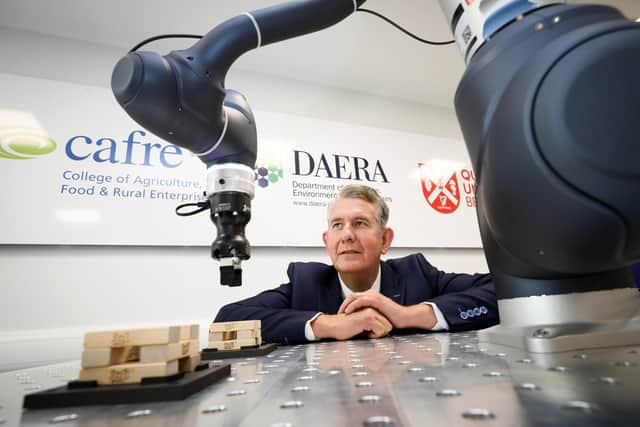Poots outlines plans for future support
and live on Freeview channel 276
This is my third article on how I see my policies delivering my shared vision of an agricultural industry in Northern Ireland - an industry that pursues increased productivity, is environmentally sustainable and displays improved resilience.
This industry would operate within an integrated, profitable, efficient, and sustainable, competitive and an effective functioning supply chain.
Advertisement
Advertisement
My previous articles outlined my vision for land and livestock. They sign posted significant changes for farmers and I’m determined that support is provided to achieve these changes, and that includes assistance with capital costs where appropriate.


Change will be required on most farms and some of this may need capital investment. This may range from simple protective fencing (or perhaps even virtual fencing) to help manage habitats under the Farming with Nature Schemes to emission-reducing equipment or buildings.
Support may also be required for the equipment necessary for the establishment of legume, clover, or herb-rich swards to increase the capture of carbon, improve stock health and reduce fertiliser inputs. Farm grazing infrastructure to help utilise this forage and keep stock in fields for longer and out of watercourses may also be needed.
The form this capital support takes will be driven by careful analysis of scheme requirements, specific needs on farms and the need to tackle wider environmental challenges where there may be little or no direct benefit to the farm business.
Advertisement
Advertisement
Processing farm waste, for example, prior to further, off-farm treatment may not be seen as an investment priority by many farmers. However, there may be significant environmental benefits for wider society in doing this in certain circumstances. The investment required is not cheap and it is not fair that the cost burden should fall solely on individual businesses.
I also want to support innovation on farms as they try to meet the challenges ahead. One example may be the adoption of ‘virtual fencing’ to manage cattle or sheep grazing through the use of GPS enabled collars. This can concentrate grazing in remote areas where it may be required for habitat management purposes without the need to erect expensive fences. It can also greatly assist grazing and livestock management.
In addition to environmental sustainability, improving farm productivity is a key objective. This means that our focus must be on driving better efficiency, not production. We need to be producing the same or more from what we already have by using fewer inputs.
Each sector will face different challenges and the need for capital support will vary accordingly. Horticultural businesses will have different needs to upland beef and sheep farms. It is important that support is provided in a flexible manner and with the ability to be adapted to meet the unique needs of each sector.
Advertisement
Advertisement
My Department will continue to invest heavily in science, research, and innovation so that new technologies and knowledge can be identified, assessed and transferred into your business to provide solutions for future challenges, help to increase productivity and environmental performance and underpin sustainable supply chains.
Again, the view out of your kitchen window will start to change over the next decade. There may be a cover on the above ground slurry store or a roof over the midden for the poultry litter or collecting yard.
You may have established a tree belt downwind of your livestock buildings to help disperse airborne ammonia emissions, or perhaps even a constructed wetlands to capture and deal with dirty water.
The bank of the river where the cattle used to drink may now be fenced off along with the little wetland habitat in the corner of the meadow, and new grazing access lanes have perhaps helped to extend the time stock can spend grazing your clover and herb rich pastures.
These might not be major capital investments, but they are all aimed at increasing productivity, helping the environment, and improving the resilience of your farm business.